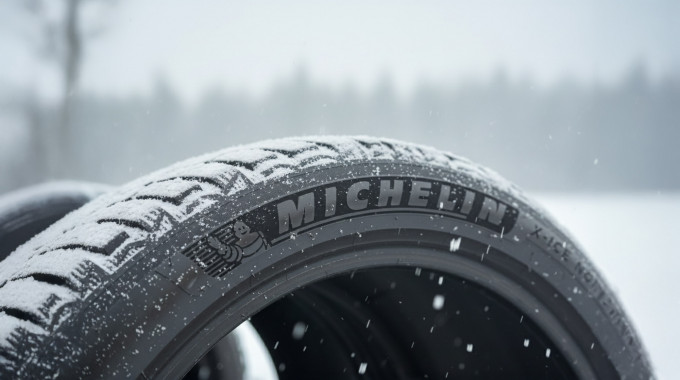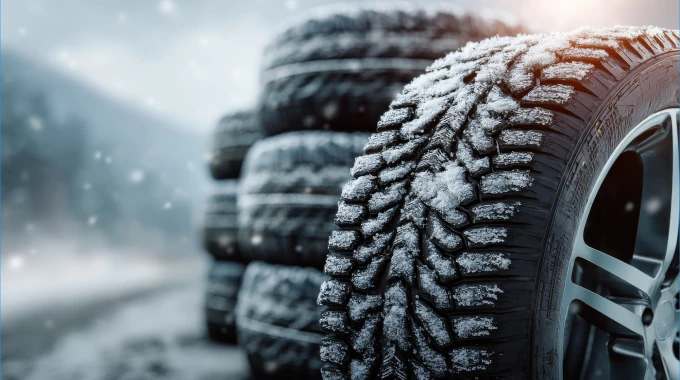
How to Sell Your Car for the Most Money
Selling your used car is almost like starting your own business. You need planning, investment, marketing, and negotiation – all in the hopes of seeing a profit at the end of the day.
On average, it can take up to 4 weeks to successfully sell a used car in the private marketplace. But don't worry, we’ve created a comprehensive step-by-step guide to help you prepare to sell privately and maximize the value of your used car.
1. Find out your vehicle's worth
It’s useful to have an industry reference point when determining your car’s value. There are a few tools that can help you discover what your vehicle is worth but Canadian Black Book is one of the more popular sites that offers data combed from new and used car sales at dealerships across the country.
Here are 5 other popular car value tools, plus our discussion about trade-in value vs resale value, and how depreciation affects the selling or trading process.
As an online retailer that buys and sells vehicles, Canada Drives leverages this fair market tool but offers even more convenience for Canadians who want to sell their car quickly at a fair price. With Canada Drives you can find out what your car is worth in minutes. You will receive an instant offer based on the details you provide. If you like the offer you can sell your car directly to Canada Drives, drop it off at a location near you, and get paid. It's a great alternative to selling your car privately as you can avoid the hassle of listing your car online, dealing with strangers, lowball offers, no-shows, and the list goes on.
But regardless of what valuation tool you decide to use, to get the most accurate information on your car’s worth you’ll need to submit some information about your vehicle. Most importantly, you’ll need the make, model, year, and mileage on the odometer. But you should also take down details like: manual or automatic transmission, does it have functioning air conditioning, and what is the “trim,” a term that simply means the version of your car’s model that comes equipped with a certain package of features.
Here are some other physical factors that may determine your car’s market value:
- Interior condition: the quality of leather seating or other types of fabric, and whether any cigarette smoke has left a lasting smell.
- Exterior paint condition: any chipping or damage.
- Mechanical issues with the engine.
- Quality of stereo and Bluetooth features.
- Primary driving environment: highways or city roads.
2. Make sure the car loan is paid off
Selling your car while still owing money on your vehicle will make the sale process challenging. Technically, you can sell a financed car, but it will be challenging since most buyers are looking for a safe (and uncomplicated) buying experience. If you owe money on your car, you should make arrangements to pay off the car loan before transferring it to the new owner. Remember, a lender stakes a claim to the car’s title while a loan is outstanding, so that lender will need to be repaid in full to release its lien.
3. Servicing & maintenance
Chances are your car could use some TLC before showing it to potential buyers.
For example, your car’s engine is making a mysterious clicking sound while driving. That’s not something you want a buyer hearing when you’re out on a test drive. Some buyers might use that clicking issue to negotiate a lower price, while others will turn and run from the sale.
It’s always a used car seller’s dilemma – how much to invest in repairs versus how much you can get back in value. There’s no easy answer, but it should be obvious that you need to repair any serious mechanical problem that might affect the immediate lifespan of the car and the safety of the driver. Depending on the province, a vehicle will require a safety certificate before a new owner can drive it.
You also have to weigh up cosmetic repairs such as body damage, paint chips, rust, missing hubcaps, etc. You need to consider how much investment you want to make to increase the car’s value. The best advice would be to get an estimate for the cost of the repair and weigh it against the value you will get in the sale. This will help you make an informed decision.
Also, be sure to cover the basics: the tires are fully inflated, all headlights and brake lights are working properly, fluid levels are topped up, like oil and washer fluid. These are simple, cost-effective preparations you can make to present your car more favourably. You want to show the potential buyer that you’ve been an attentive owner.
4. Washing & detailing
What’s the first thing you notice when you walk into a dealership showroom?
Every vehicle is shining like it just rolled off the factory floor. You want your car to have the same effect on a potential buyer. In other words, you need to roll back the years on your car and a good washing and detailing is your time machine.
Now, before you drive to the gas station for the cheap touchless car wash, think about whether you want an average, spotty wash or something that will really make your car shine. If you have the time and inclination, roll up your sleeves and wash it yourself using our best practices guide.
Cleanliness counts in a big way; getting a detail service to clean the interior is going to present your car in the best light. Keep in mind this will cost you a couple hundred dollars at least, but you only need to do it once. If you take a DIY approach, here’s some check points for an interior clean:
- Thoroughly vacuum the seats and floors, both front and rear. There could be years of built-up crud stuck between those cushions.
- All miscellaneous debris must go. Clear out your glove compartment, door compartments, cup holders, ashtray, and any other nook that might be containing old food, paper, and junk.
- Wash the floor mats or consider buying new ones.
- Clean the interior of the windows. Gunk tends to build up from the heating and air conditioning vents underneath.
- And to all those junk food junkies, don’t forget to restore that fresh new car smell with a good scent!
5. Advertise your vehicle
Ready for a crash course in digital marketing? You’re going to need to learn a few tricks about internet advertising if you want to reach as many potential buyers as possible. Of course, there is nothing wrong with the tried-and-true method of placing a FOR SALE sign on your car and hoping for the best. But those who are savvy, and with a few bucks to invest, will reach more buyers online.
Here’s 3 ways to advertise your vehicle:
Street advertising
The good old fashioned FOR SALE should never be discounted. It only cost a few bucks for the sign, and if you park in a highly visible area, you will get plenty of eyes on your car. But don’t expect quick results using street ads unless luck is on your side.
Paid listings
The number of online car listings sites are plentiful. In Canada, Auto Trader, Wheels.ca, and Auto123.com are go-to websites for online listings. These sites excel at attracting serious buyers. Many sites will offer free listings, though expect your vehicle to get buried in a digital avalanche of listings unless you spend money to get your listing “featured” or ranked at the top of search results.
Free listings
Nothing wrong with sites like Craigslist and Kijiji for advertising your car at no cost. Many sellers are also opting to use social media sites like Facebook Marketplace to advertise for free.
Tip to writing a great auto listing
You want to describe your car in a persuasive way while providing the important information buyers are looking for. Be sure to frontload your listing’s title and description with important details like make, model, year, transmission, engine, and price. This will help search engines understand your listing and deliver the result to the buyer.
Also, write a description that details your car’s attributes – reliability, well-maintained, and fuel-efficient are keywords that attract buyers. Consider presenting your vehicle’s specs in bullet points so the reader can quickly scan relevant information.
Tips for taking good photographs
Pretend your car is signing up for online dating and it needs attractive photos to find a match. You want to present your car in the most flattering light possible, while maintaining an honest depiction.
- Photograph your car during the magic hour – this is that time of day when the sun is just going down and everything is bathed in golden light. The perfect glamour shot for your car.
- Take as many photos as possible – upload the maximum to your listing site. The more photos the better for buyers to get an impression of your car from all angles, inside and out.
- Use a quality camera – you don’t need to borrow your dad’s $5,000 telephoto lens, just make sure you are using a current smartphone or a click and shoot. HD images will go a long way compared to grainy shots that look like they came from a Blackberry in 2007.
6. Meeting potential buyers
Here’s where the prospect of selling a car privately will repel some. Meeting potential buyers takes patience because for every serious buyer you might get three or four no-shows, low-ballers (buyers offering way below asking price), and window shoppers – someone who isn’t serious but just likes to look (or test drive) for the fun of it; all three types will test your resolve.
The best way to prepare for these interactions is to be fully prepared with answers to all the most commonly asked questions you will get about your car, as well as prepare necessary paperwork like service records and a CARFAX vehicle report.
You should also be prepared to haggle or negotiate your asking price even if you stated on your listing that your price is “firm.” Very rarely will buyers in the used car marketplace pay the exact asking price requested by the seller. But if you have documentation to prove your car’s worth (including how much money you invested in its reconditioning), then you have leverage to hold firm on your original asking price.
7. Paperwork
What kind of paperwork you will need to complete a sale in the private marketplace depends largely on where you live. Each province has different rules about ownership transfers, and you should always consult your provincial government website about what documentation is required.
In Ontario, for example, there are several documents the seller must organize to complete the process of selling a used car.
Bill of sale: The bill of sale is a standard contract that you can use to transfer ownership to a new buyer.
Used Vehicle Information Package (UVIP): UVIP is mandatory in a private sale and must be provided by the seller.
Safety Standards Certificate (SSC): The SSC certificate can only be granted by a licensed mechanic and is required before new plates can be put on the car. This certificate is not required if the new owner is your spouse.
Application for transfer: On the back of your ownership permit you’ll find an application for the transfer section. You will need to complete and sign this section and give it to the buyer. Until the buyer registers the vehicle at a ServiceOntario location, the vehicle will remain registered with the seller.
8. Making a safe transaction
It’s natural to be nervous about the final stages when selling a car privately. You are dealing with a large sum of money coming from a stranger. You want to be vigilant and safeguard yourself against any scams.
The safest way to accept payment for your vehicle is to have cash or a bank draft delivered in-person by the buyer. A bank draft is a certified cheque from a financial institution meaning there is no possibility it could “bounce” – have insufficient funding. The banks usually charge a fee for these cheques, which the buyer might not like, but it’s for your own protection.
A personal cheque is not advisable, as it could have insufficient funds and you won’t find out until the fraudster is long gone with your car. It’s also advisable to avoid wire transfer as they too can be susceptible to fraud.
There’s an easier way to sell your car
If you don’t have the time or will power to sell your car privately, selling it to Canada Drives is an incredible time saver; plus you can do it all from the comfort of home. Simply provide a few details about your car online and you'll get an instant offer for your used vehicle. If you are happy with the offer simply drop off your car at a Canada Drives location and get paid! We can even pay off your existing loan and pay you the difference.
More content about







